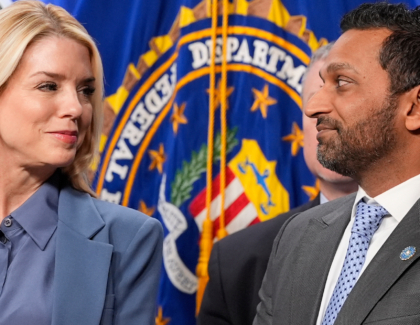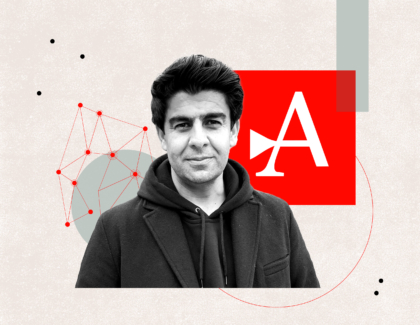Sign up for the daily CJR newsletter.
Brooklyn these days may be the land of celebrities and high-priced real estate, but the borough is also reckoning with less glamorous aspects of its recent history. From 1990 until last year, then-Brooklyn District Attorney Charles “Joe” Hynes presided over a host of cases that produced wrongful convictions.
So far this year, six men have been exonerated, including five who went to prison during the high-crime era of the late 1980s to early ’90s. With 90 more cases currently under review, the ranks of the exonerated are almost certain to grow.
Unlike the notorious media frenzy that surrounded the Central Park Five in 1989, most of the Brooklyn cases now in question initially made no headlines. That Hynes was on rather friendly terms with many of the city’s leading reporters only partially explains this lack of oversight. The more enduring problem is that Brooklyn, home to 2.5 million people, continues to lack sufficient borough-wide news coverage.
Widely hailed as a reformer when he first took office, Hynes exited in disgrace at the end of his sixth term. During last year’s victorious campaign, new DA Ken Thompson capitalized on public outrage over Hynes’ handling of numerous cases, including many that have resulted in exonerations.
Such sentiment was in part driven by a stream of stories critical of Hynes found in nearly all citywide newspapers during the race. Columnist Michael Powell and three fellow New York Times reporters garnered a 2013 Polk Award for their stories that sparked into an inquiry into more than 50 cases (largely from the Hynes era) involving Brooklyn homicide detective Louis Scarcella, who reputedly coerced false confessions from accused criminals and witnesses.
But this media scrutiny was almost nonexistent early in Hynes’ time in office. He took the helm in 1990 with an impressive track record and plenty of connections in both the political and media worlds. Three years earlier, as special prosecutor in the Howard Beach case (appointed by Governor Mario Cuomo), Hynes had won convictions of the three main figures, all white, in the death of Michael Griffith, a black man.
In his first year in office, Hynes waged a high-profile prosecution of the white ringleaders in the Bensonhurst killing of Yusuf Hawkins, a 16-year-old African American. That he succeeded in winning a second-degree murder conviction against only one of the participants caused Hynes to face the ire of Rev. Al Sharpton.
Yet being a foe of Sharpton during the Rev’s provocateur era only solidified Hynes’ bona fides in the eyes of many of the city’s leading liberals, including crusading journalists like the late Jack Newfield. A mainstay at the Village Voice from the mid-1960s through the late-’80s, Newfield was a columnist at the New York Post during most of Hynes’ first three terms, and his circle included many of the leading muckrakers in the city.
“I lionized Hynes,” confesses veteran reporter Ron Howell (aka “Brooklyn Ron”), who was at Newsday at the time. Such a sentiment is common among the many reporters I’ve spoken to about Hynes, who during his first term also established a reputation as a reformer by providing drug treatment programs as an alternative to incarceration.
Hynes, says Howell, helped his aunt settle a dispute with an unscrupulous contractor. And he points out that in general, Hynes made an effort “to cultivate his relationships with the press,” as illustrated by the fact that longtime Daily News crime reporter Jerry Schmetterer eventually became the DA’s press spokesman.
Another early Hynes ally, veteran police reporter Len Levitt, went in a different direction. “We had become pretty close when he was special prosecutor,” Levitt recalls. After getting elected, Hynes asked him be his press secretary, but the reporter declined.
Levitt remained friendly with other members of Hynes’ inner circle. And within a year or two after Hynes took office, it became clear to him that the DA “was bored and wanted to run for higher office.” While Hynes would indeed make an unsuccessful bid for attorney general in 1994, Levitt soon became a vocal critic, helping publicize evidence that became pivotal in the case of now-exonerated Jabbar Collins.
During the early ’90s, even as Hynes was cultivating his bases of media support and plotting his political future, he was also prosecuting several cases built on faulty foundations, including those of Collins, David Ranta, and Antonio Yarbough. But the failure of local journalists to report critically on these and other cases wasn’t entirely due to their cozy relationship with the DA.
When Hynes first took office, Brooklyn averaged more than two murders per day, and few could imagine that high-crime areas like Bed-Stuy and Bushwick would ever become gentrified destinations. In 1990, there were 765 murders committed in Brooklyn (a number that has fallen by over 80 percent in recent years). Across the city, public clamor for law-and-order helped a former federal prosecutor, Rudy Giuliani, win the mayor’s race in 1993.
Paul Moses, Brooklyn city editor for Newsday during the early 1990s, explains that, at that time, it was hard for a citywide daily paper to dispatch reporters to cover the many crime scenes.
“Murder trials were so routine that it was hard to see them as newsworthy,” Moses says. DNA evidence was still relatively new, and the notion that police and prosecutors might coerce the accused or witnesses into false confessions (at issue in the Scarcella cases) was not widely held. In general, Moses says, the tendency among many reporters is to “give prosecutors the benefit of the doubt, whereas it’s risky to support the cause of the accused.” All of these factors meant that most Brooklyn murder cases in the early ’90s were either not covered or not questioned in local media, from arrest to conviction.
But the locations of many of the cases that have resulted in exonerations over the last few years adds yet another element to the story. It’s notable that the initial murders took place at or near housing projects in Coney Island (as in the case of Yarbough) and Williamsburg (Collins, Jonathan Fleming), as well in the Hasidic community of South Williamsburg (Ranta). Covering these areas, Moses notes, requires familiarity with local communities in order for journalists to be effective.
One success story that Levitt and others point to is Hella Winston, whose exposés since 2008 in The Jewish Week of child sex abuse in Brooklyn’s Hasidic communities helped place Hynes on the hot seat. In general, many argue that a leading reason why the local press became much more critical of Hynes during his last decade in office stemmed from the repeated allegations–also sparked initially by Jewish Week reporting–that his office ignored or covered up this pedophilia.
Since the early 1990s, when Brooklyn’s lack of full-scale media coverage allowed far too many problems to go unnoticed, the rise of the Web has expanded the reach of more established outlets like the Brooklyn Papers or Brooklyn Daily Eagle, spurred the growth of newer sites like DNAinfo.com, which covers multiple neighborhoods, and led to a crop of geographically specific sources like Sheepshead Bites or Bushwick Daily.
Yet while the expanding coverage increases the amount of attention to crime scenes in many locations, wide swaths of the borough, including housing projects from Coney Island to Brownsville, remain largely uncovered. High-profile crimes often occur in such places, but few news sites–whether citywide or local–have reporters who are experienced in working in low-income areas. It’s also hard for a startup site to generate a revenue stream covering neighborhoods not experiencing gentrification. Amid its current boom, Brooklyn seems to have everything except a centralized news source.
As Brooklyn’s new DA, Ken Thompson, tries to dig out from the mess left behind by Joe Hynes, the tide of exonerations is alarming for many reasons. Innocent people were sent to prison while the real killers remained on the streets, hundreds of millions in public money will likely be paid out in restitution, and a powerful government office faced little scrutiny for a decade. These are a just a few of the problems that arise from a media void. It’s not clear whether Brooklyn will ever get the borough-wide news outlet it needs, but in any event, let’s hope that reporters maintain a more critical stance towards the DA’s office as the Thompson era commences.
Has America ever needed a media defender more than now? Help us by joining CJR today.






